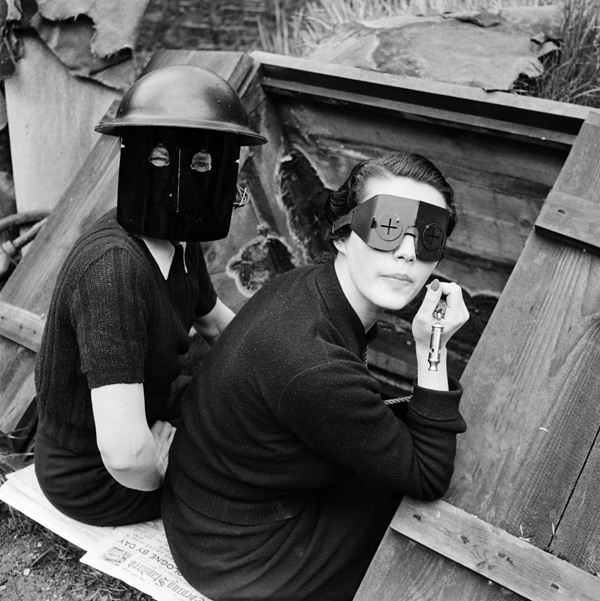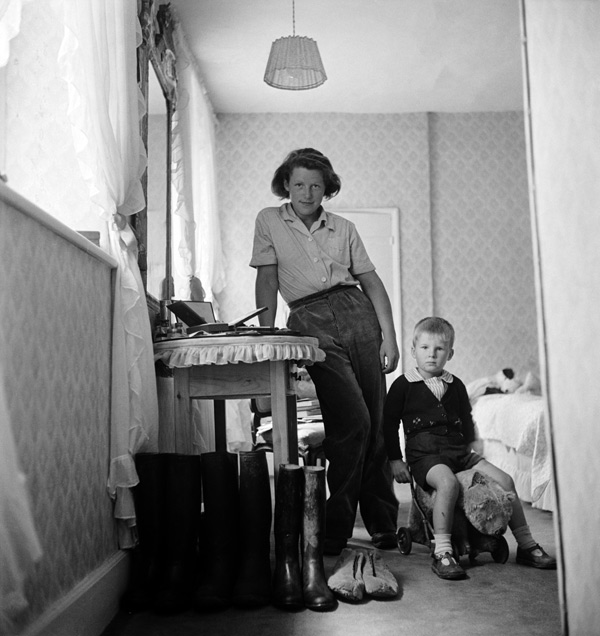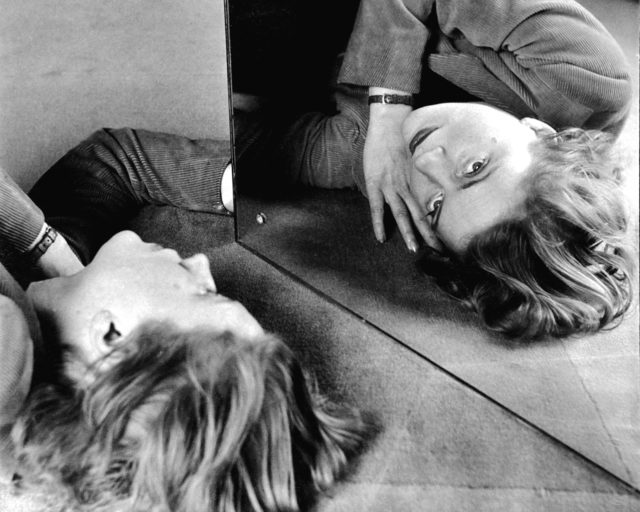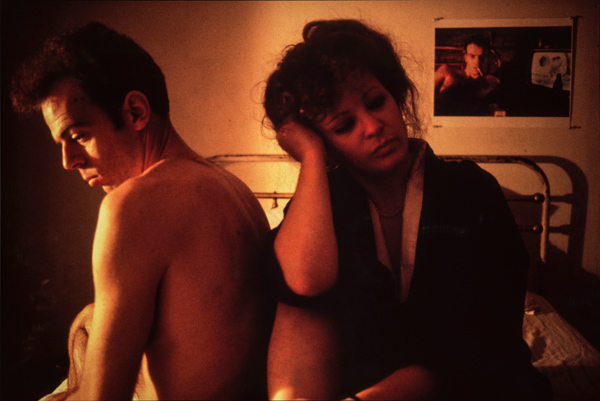Lee Miller: A Woman’s War
From the London Blitz to Hitler’s apartment, Lee Miller, once a muse to the Surrealists, captured some of the most audacious images of World War II.

Lee Miller, Fire Masks, Downshire Hill, London, England, 1941 © Lee Miller Archives, England 2015
Late in life, when people asked about the beginnings of her career, Lee Miller would answer, “I used to take a few photographs.” It’s hard to believe this was the same woman—a former Condé Nast model—who doorstepped Man Ray and demanded he teach her everything about photography, and who, as a burgeoning photojournalist, refused to return home to the United States when World War II broke out in Europe, choosing instead to push toward the front lines. Miller was one of the first photographers to uncover the horrors of the concentration camps. In war zones, she carried a Rolliflex and a brass knuckle-duster engraved with her name.
Previous Miller retrospectives—notably The Art of Lee Miller, presented in 2007 at the V&A Museum—have repositioned her reputation as a singular photographer, not just an intriguing muse and a body that Man Ray, Jean Cocteau, and Roland Penrose fractured into sensuous, strange pieces. What’s novel about Lee Miller: A Woman’s War, currently on view at the Imperial War Museum in London, is the exhibition’s focus on Miller as an artist who interrogated a woman’s place in the world before, during, and after the war. No doubt her own career mirrored those of many Englishwomen she captured, for example, who worked during the war: there was a burst of opportunity, followed by disappointment. In Miller’s case, this experience was compounded by depression; she was forever haunted by what she had witnessed in Europe.

Lee Miller, Lady Mary Dunn and young evacuee, Buckinghamshire, England, 1941 © Lee Miller Archives, England 2015
Instead of Miller’s more surreal, well known visions, A Woman’s War includes her photo-critiques of relationships between men and women in artistic circles. Images of bohemian gatherings in the 1930s feature clothed male Surrealists and their naked lovers. Husbands loom possessively over their wives. This is the work of a model-turned-artist who starts to question the world around her: Miller was tired by the domineering nature of her lover Man Ray, and as an artist, she longed to be released from working in his shadow. Throughout her short career, as this exhibition demonstrates, Miller also brought many pioneering female artists into the spotlight, and made a point of emphasizing their creativity. She photographed the filmmaker Jill Craigie watching over a scene, and the writer Martha Gelhorn with a pen in her hand. Later, in 1946, Miller made a searing Surrealist critique: a portrait that pits a giant Max Ernst against a tiny, marionette-like Dorothea Tanning.
Despite bringing some Surrealist flair to the practice of shooting wartime fashion, Miller’s images for British Vogue from the 1930s appear inert when compared with what came next. After female conscription was introduced, in 1941, she began to document women on the home front: factory workers, mechanics, pilots, nurses, land girls, and Wrens, all going about their daily business. A bizarre parade of unnerving objects such as surgical gloves, parachutes, and gas masks also made their way into the pages of Britain’s fashion bible. Fortunately for Miller, her commercial career coincided with the appointment of Audrey Withers as editor of British Vogue. Withers cared little for frocks or hats, and she was responsible for commissioning some of the magazine’s most daring visual reportage.

Lee Miller, Two German women sitting on a park bench surrounded by destroyed buildings, Cologne, Germany, 1945 © Lee Miller Archives, England 2015
In July 1944, Miller was allowed to join the Allied forces liberating Western Europe. She spent the next year and a half roaming the continent and documenting the aftermath of Nazi rule, singling out female victims and perpetrators in particular and questioning whether, in wartime, anyone could truly be an innocent onlooker. Her images of nurses working on the front line, concentration camp prostitutes, and lone women refugees with their children, are vital records of war her male colleagues didn’t or wouldn’t seek out; they are also among the most extraordinary images Miller ever created. Rather subversively, clothes play an important role in her dispatches for Vogue, whether it’s the traditional German dress a local girl wears for an enforced tour of Buchenwald, or the immaculate nurse’s uniform a Nazi teenager has chosen for her suicide. The only disappointment of A Woman’s War is that more of Miller’s own writings aren’t displayed alongside her images—impressionistic and searing first-person accounts, which proved Miller to be the rare photojournalist who is as competent a master of prose as images.

Lee Miller with David E. Scherman, Lee Miller in Hitler’s bathtub, Hitler’s apartment, Munich, Germany, 1945 © Lee Miller Archives, England 2015
Miller’s photographs often meet the gaze of her subjects with subtle precision, herself included. Together with the photographer David E. Scherman, Miller was the first person to enter Hitler’s Munich apartment as American forces were liberating the city. It was only natural that Miller, an Aryan beauty if there ever was one, composed an uncanny spectacle with herself at the center. Naked in Hitler’s bath and clasping his washcloth, her muddy boots soiling the Fürher’s pristine white bathmat, she performs for the camera on her own terms. In this shocking tableau, her stare is intimate—and defiant..
Lee Miller: A Woman’s War is on view at the Imperial War Museum in London through April 24, 2016.

























